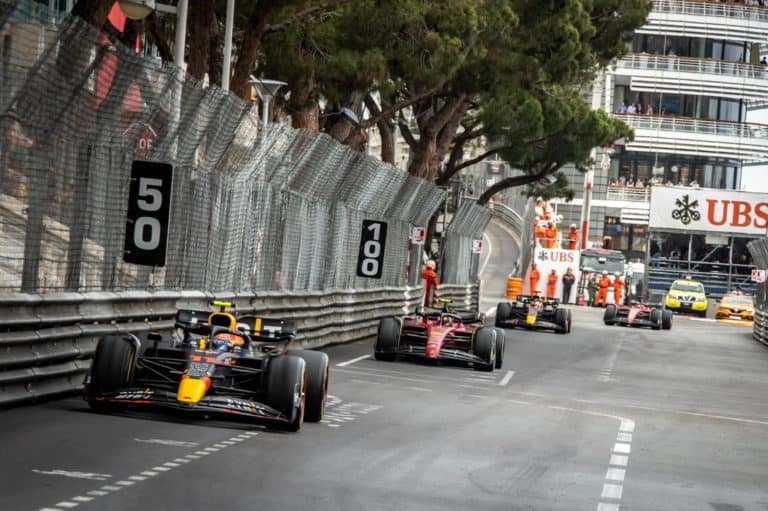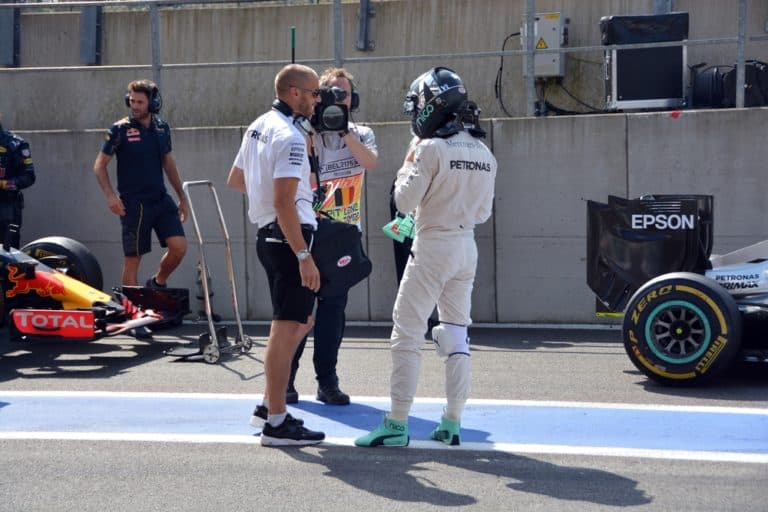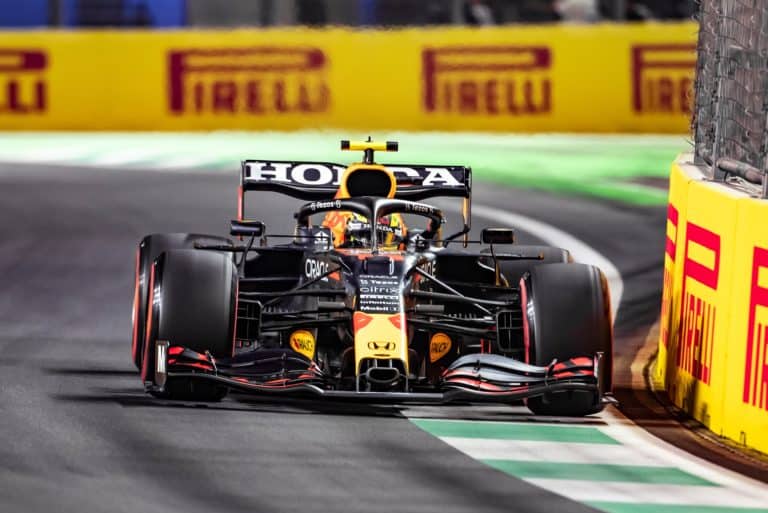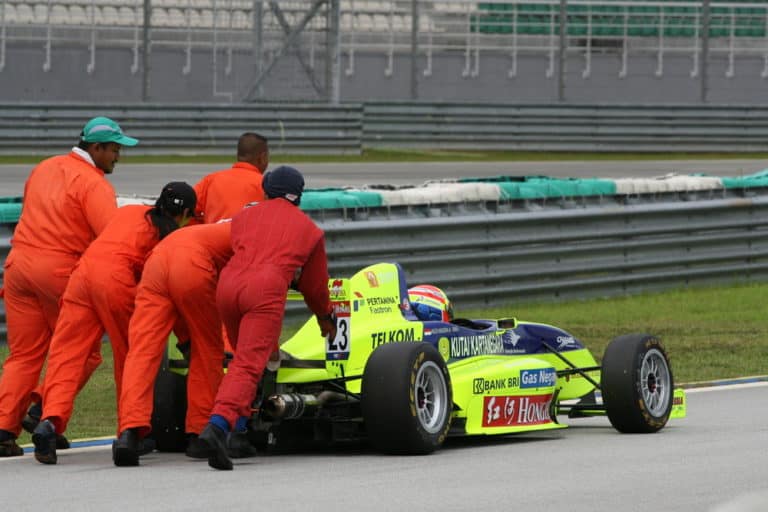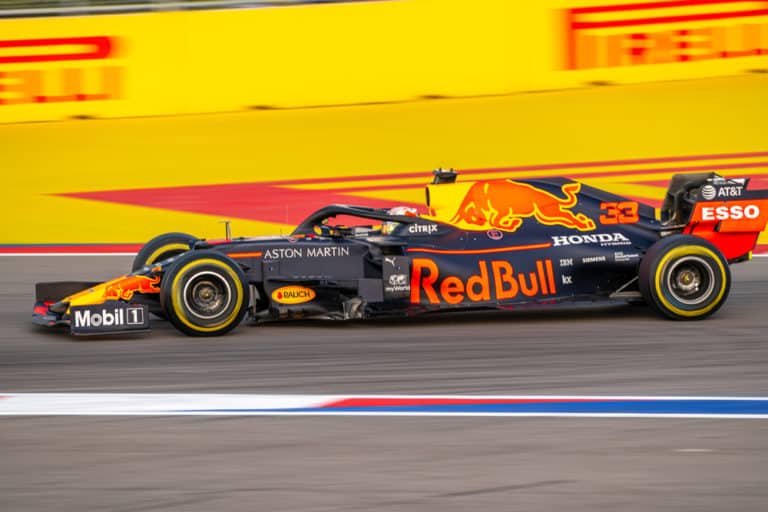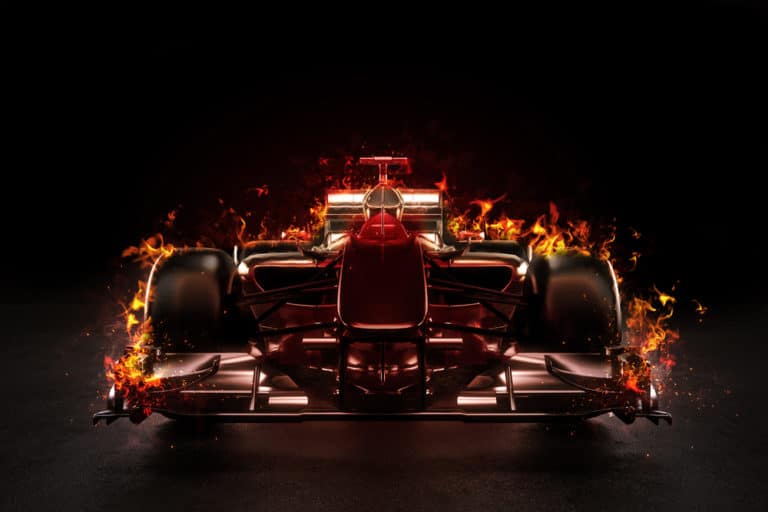Editorial credit: Jeff Schultes / Shutterstock.com
There’s no doubt that F1 is an exhilarating sport. So, you would be forgiven for thinking that F1 cars are kitted out with the same bells and whistles as your vehicle at home. However, there are salient reasons why this is not the case.
F1 cars do not have a handbrake but, instead, have a complex system for braking. The two reasons F1 cars don’t have a handbrake are because the car’s weight necessitates their exclusion for peak performance, and they aren’t deemed necessary because F1 drivers don’t often have to stop on inclines.
While it is clear that F1 cars don’t have handbrakes, the reasons for that are really interesting, as is the real way that F1 cars can brake from 200 miles per hour to 0 in 4 seconds! Read on for more.
If you’re looking for some F1 merchandise, check out the awesome stuff at the official F1 store here.
Why F1 Cars Don’t Have A Handbrake
Formula One’s main priority is speed. And, to achieve the sport’s astronomical speeds, the car’s weight has to be reduced as much as possible. This is one of the major reasons that F1 cars do not have handbrakes.
Ferrari has even been known to change their cars’ paint scheme from glossy to matte to save a few grams of weight. This is how important each gram of weight is in F1. This can be the dividing line between a win and a loss and is taken very seriously.
Another reason F1 cars don’t have handbrakes is that they aren’t considered necessary. There is usually no reason for an F1 car to stop on an uphill part of the track; even if there is, they can stay in gear to stop it from rolling backward.
However, it is a problem when, like what happened with Carlos Sainz in the 2022 Austrian Grand Prix, an F1 car starts rolling back down the hill while there is a need to escape the car. With Sainz, this reason was a fire in the car.
Instead of having a handbrake, F1 cars allow for pressing a button to lock the rear differential, which corrects understeering through corners. This, however, can slow F1 drivers down and potentially cause oversteering.
Braking Systems In F1
Braking in F1 is another essential component of winning. If the braking around corners is not conducted properly, it can also negatively affect the driver’s lap time. F1 cars can perform the astounding feat of getting from 200 miles per hour to 0 in 4 seconds.
How The Cylinders Work
F1 cars have two master cylinders, as per regulations. The brakes on an F1 car, akin to how it works on regular cars, work on all four wheels. One brake cylinder works on the front wheels and the other on the back ones.
The pressure in the front wheels cylinder goes through a brake line onto the front brake calipers, which causes the pistons to push onto the brake disc. This friction causes the car to slow down.
The back wheel situation is more intricate. Three different causes slow down the back wheels. The wheels decelerate because of friction from the brakes, electrical braking due to the hybrid electric motor, and engine braking (resistance from the engine being in motion).
The three reactions work together to slow the F1 car to the desired speed. This system is called the Brake By Wire (BBW) system.
The system at the rear is even more complicated than this and works with an Electronic Control Unit (ECU). The reasons for having this system in place are twofold: safety and performance.
If the BBW system ever fails, then the pressure on the brake by the driver’s foot is passed straight to the rear brake calipers, as in regular cars. Having a backup system is very important in a speedy sport like F1.
Also, braking stability is pivotal to drivers, and this BBW system provides this. Braking is as important as steering when it comes to being able to control a car on an F1 circuit.
Brake Bias
The cylinders have a bit of room to move. This is to allow the driver to change the brake bias. The brake bias is the relationship of braking forces between the front and the rear wheel brakes. This is adjustable on a dial on the steering wheel.
Usually, a Formula One car will run around 55 percent of the braking force through the front and the rest through the rear, but this will be adjusted at every turn to account for the lightened fuel loads and other factors. Each corner has a slightly different characteristic, calling for a different bias.
Calipers
Calipers are mounted horizontally on regular cars, but calipers are attached towards the bottom on F1 cars to keep the center of gravity lower. This is done to allow the car to travel as quickly as possible.
Calipers have a bleed nipple at the top to let air out, also known as bleeding the brakes. Air in the hydraulic fluid system makes braking more difficult and less accurate.
Temperatures
The brakes turn kinetic energy from the car’s movement to heat energy. F1 brakes work in a wide temperature range. The discs can get over 1000 degrees Celsius when braking and have over 1000 holes to help with the cooling process.
The disc can possibly get too hot, and the brakes will then be less effective. This is equally true with discs being too cold. The brake ducts are pivotal in keeping the temperature of the brake system optimal for braking and also for keeping the tires in peak condition.
Impact On The Driver
The driver actually has to provide all the force for braking in F1. Drivers use their body weight to get enough pressure for the car’s deceleration. This amounts to withstanding huge G-forces of around 5Gs.
The deceleration causes 50 kilos of pressure on the driver’s head and helmet.
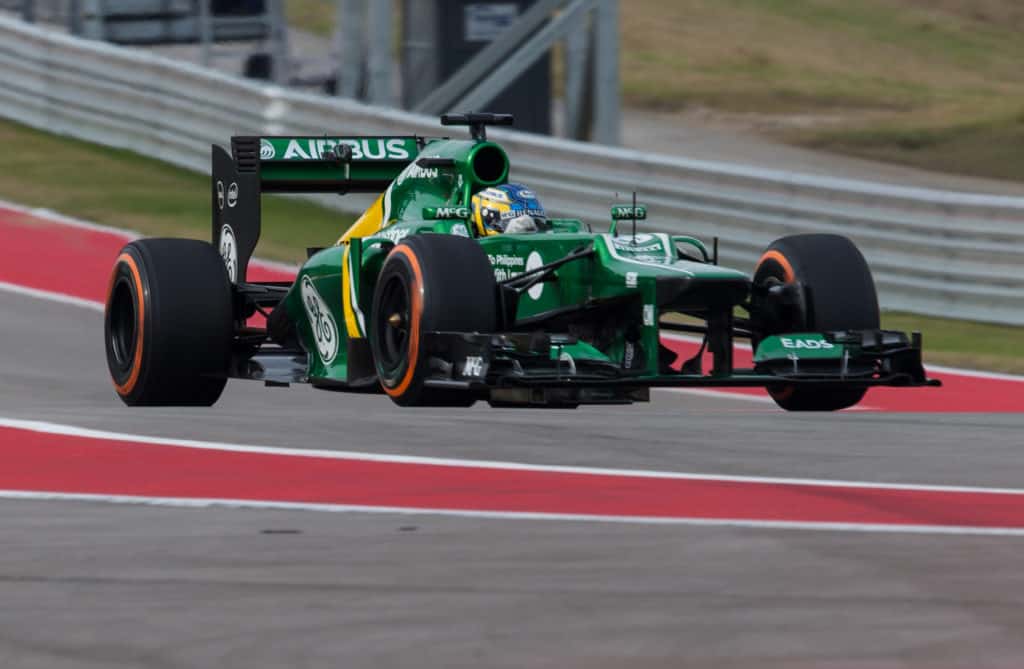
Conclusion
F1 braking, although without a handbrake, is a complex beast. The rear braking system is especially intricate to provide for safety and performance. Handbrakes on F1 cars are seen as unnecessary and too heavy to slow down the car.
Resources
- https://www.motorsport.com/f1/news/ferrari-matte-paint-performance-benefit/4338380/
- https://www.youtube.com/watch?v=1wpGljiiLeE
- https://www.quora.com/Can-you-use-handbrake-maneuvers-in-Formula-1
- https://www.mercedesamgf1.com/en/news/2019/06/formula-one-brake-systems-explained/
- https://www.youtube.com/watch?v=ODaPkCehkkA
- https://www.youtube.com/watch?v=N2NyxdBNFe0
- https://www.formula1-dictionary.net/brake_balance.html

